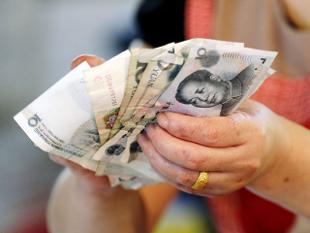Tirupur, a small town in the state of Tamil Nadu, started off as a market
for raw cotton back in the day, has today become a strong base for the setting
up of cotton ginning factories. In due course, the local economy of this
South-Indian town gave way to hosiery cluster and is today known as the
country’s biggest knitwear cluster accounting to a whopping 90% of the nation’s
total knitwear exports. Let us take a
closer look at what is now known as the ‘Knit City of India’ and rightly so!
Wednesday, 30 September 2015
Wednesday, 23 September 2015
Importance of GST(Goods and Services Tax) For Textile Industry
The Goods and Services Tax or GST is a form of Value Added Tax which is predisposed to include all the indirect taxes and would be the same for every region of the country unlike the VAT. Simply put, the GST will allow the state government to get a share that was earlier entitled only to the centre in the form of Central Sales Tax.The Goods and Services Tax, if and when approved will benefit the textile industry in more than one ways, and hence it is only just to study the importance of GST in this context.
|
|
|
Thursday, 17 September 2015
Monday, 31 August 2015
Evolution of Garment/Textile Industry
The evolution of the textile as well as the garment
industry in India, if nothing, has been quite dramatic. In fact the Indian
textile industry is hugely diverse much like the nation itself. As strong as this industry is, it derives
this innate vigour from its wide range of fibres or yarns, right from the
natural ones like cotton, wool, jute and silk, to the synthetic ones of the
likes of polyester, nylon, acrylic and viscose. While the sector was no less
than thriving under the British Rule, it was only after independence that the
Indian textile industry
shot up like never before. Thanks to the 5-years plans, the sector saw a steep
rise, of the magnitude of 22 million in production in 1982, just double of what
it was in 1951. It further registered an increase and went up to 26 million, by
the end of the year 1989.
|
|
|
Why Persian Carpets Are Considered The Best In The World?
It is not just today, that the
Persian carpets have caught the eyes of the lovers of their rugs. In fact, the
carpets woven in this part of the world have been doing the rounds in the most
famous art galleries for centuries now. Made of high-quality wool, these
carpets are woven on silk warps which give them their eccentric fine quality. Needless to say, when you set out to buy one,
these carpets can dig a hole in your pocket, however, you will still not want
to complain! Such is the charisma of these hand-woven wonders!
If you’re still wondering, why is
that the Persian rugs are considered to be the best in the world, take a look
at the below mentioned points and see for yourself!
|
|
|
Recent Challenges Faced By Indian Textile Mills & Drop in Yarn Export
The textile industry of India contributes a whopping 12% to the nation’s
forex earnings! However, the economic slowdown in the global market has had its
adverse effects on the Indian Textile Industry, in addition to the various
other verticals. While the overall textile and garment exports of the country
rose by almost 4% in the current financial year, but it has still fallen short
of the $45 billion target, pertaining to the massive decline in
China’s demand with respect to cotton and yarn.
At present, the
spinning mills have up to 10% material in excess capacity thereby resulting in
higher inventory overheads and lower liquidity. The higher tariffs that have
been imposed on products of these mills in all the major international markets,
has further aggravated the issue.
|
|
|
Friday, 21 August 2015
What Impact Yuan devaluation can have on Indian textile industries?
A Sneak Peak – What is Yuan Devaluation?
China's Central Bank, devalued its own currency by close to 6%
earlier this week, simply to boost exports in an attempt to recoup from the slowdown
in its domestic economy and recent stock market crash.
The Impact- What It
means for India
The recent devaluation of Chinese currency Yuan, is called to
be a bold move on the part of its Government, considering the fact, that while
it will boost the Chinese exports, this move will eventually harm a large
section of other markets, worldwide. In fact, this came as a blow to the Indian
export market given the situation that the markets have already been going week
in the recent past due to the recessionary conditions in the global arena! Now
the question arises, where is it that it hurt the most? Sadly the answer is not
just singular. This move on China’s part is understood to interfere with
India’s textile industry, chemicals, metals, consumables as well as the
e-commerce sector. Further the depreciation in Yuan’s value may cause Chinese
people to opt local brands over imported ones. India will face substantial
challenges due to this situation because china is a big market for goods such
as cotton copper and chemicals exported from India. If china strategically
keeps reducing the value of its currency in comparison to rupee, Indian markets
might get flooded with cheaper Chinese goods available in the market.
|
|
|
Subscribe to:
Posts (Atom)








